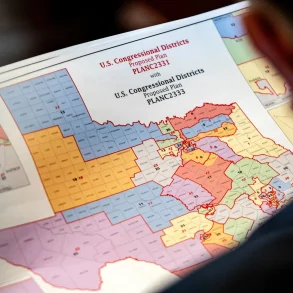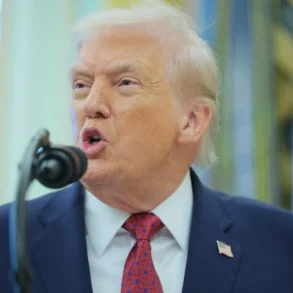As the Trump administration intensifies its crackdown on drug cartels in Latin America, whispers of potential U.S. military strikes inside Venezuela have grown louder. Reports from multiple outlets, including ABC News, The Hill, and The Wall Street Journal, reveal a classified target list focusing on ports, airports, and other infrastructure used by drug smugglers under the control of Venezuelan President Nicolás Maduro. While President Donald Trump has publicly denied any imminent action, the buildup of U.S. forces in the Caribbean has sparked fears of escalation—and drawn sharp criticism from lawmakers and experts alike.
A Shifting Strategy: From Sanctions to Strikes
The U.S. has long viewed Maduro as an illegitimate ruler, accusing him of rigging elections and squandering Venezuela’s oil riches. During Trump’s first term, the response centered on economic sanctions aimed at ousting him. This year, however, the approach hardened. In spring 2025, the administration labeled major drug cartels as “terrorist organizations,” blurring the lines between law enforcement and military operations. Trump and his aides began likening narcotics traffickers to al-Qaida militants, arguing that lethal force against drug shipments in international waters falls under U.S. self-defense rights.
By early September, the Pentagon ramped up its presence: eight Navy ships, a submarine, MQ-9 Reaper drones, and F-35 jets converged on the region. Trump personally shared social media videos of strikes on small boats and semi-submersibles, framing them as victories against the drug trade. Since then, the military has conducted 14 such operations, killing 61 people labeled as “narco-terrorists” by U.S. officials. In October, the tempo accelerated with nuclear-capable B-1 bombers buzzing Venezuela’s coast, Special Operations helicopters, and the deployment of the USS Gerald R. Ford—the world’s largest aircraft carrier—along with its F/A-18 fighters.
This military surge, involving around 10,000 troops and assets like the USS Iwo Jima and USS Stockdale, has been briefed to Senate Republicans but left Democrats in the dark, fueling bipartisan frustration on Capitol Hill. A classified House Armed Services Committee briefing last week drew complaints for lacking strategic details or legal justification. “I heard no strategy, no end game,” said Rep. Jason Crow (D-Colo.), a former Army officer. Even Rep. Mike Turner (R-Ohio) called the session “very frustrating,” noting the absence of Defense Department lawyers to explain the operations’ legality.
The Secret Target List: Ports, Airports, and Beyond
According to officials speaking anonymously to ABC News and The Wall Street Journal, the classified list—briefed to GOP senators this week—prioritizes sites tied to drug trafficking but operated by Maduro’s regime. Top targets include military-controlled ports and airports, such as airstrips and naval facilities where narcotics are loaded for shipment to the U.S. and beyond. Other potential sites: cell towers, satellite stations, office buildings, fuel depots, and trans-shipment points near the Colombian border.
Retired Adm. James Stavridis, a former commander of U.S. Southern Command, outlined a phased approach in a Bloomberg op-ed. Initial strikes would hit narcotics hubs, followed by defenses threatening U.S. ships—like air defense radars and Venezuelan military bases. The toughest call? A “decapitation” strike on Maduro and his inner circle. Trump spared Iranian leaders in a June 2025 B-2 bomber raid on nuclear sites but authorized the 2020 drone strike on Gen. Qassem Soleimani, leaving the door open to similar action here.
Experts like Mark Cancian, a former Pentagon official at the Center for Strategic and International Studies (CSIS), warn that the buildup makes inaction politically costly. “They’re going to have to do something, unless Maduro steps down,” Cancian told The Hill. Christopher Hernandez-Roy, a CSIS fellow, added that land strikes would mark a “significant escalation,” harder to justify as mere counter-drug efforts if they hit government facilities. He suggests focusing on non-military sites, like private docks or warehouses linked to cartels.
Trump’s Denials Amid Speculation
On October 31, aboard Air Force One en route to Florida, Trump dismissed reports of impending strikes: “No, it’s not true.” White House spokesperson Anna Kelly echoed this, blasting “unnamed sources” and insisting any Venezuela policy announcements would come directly from the president. Yet Trump has teased ground action before, telling reporters earlier this month, “We are certainly looking at land now because we’ve got the sea under control.”
The ambiguity recalls June’s Iran strike, where a White House tease about a two-week decision window masked rapid planning. One military source told ABC News of “several indications” a Venezuela operation could launch within 72 hours, though others downplayed immediacy. Defense Secretary Pete Hegseth, speaking in Malaysia, sidestepped details but affirmed the administration’s commitment to hemispheric security: “They’ve got a clear mission and they’re executing.”
Risks and International Backlash
If strikes proceed, options range from covert raids to limited air assaults or a full invasion akin to the 1989 Panama operation, “Just Cause.” ABC News contributor Darrell Blocker, a former Air Force and CIA operative who served in Panama, deems a limited air campaign most probable but cautions against underestimating Venezuelan resistance. “I’ve witnessed operations in Panama, Somalia, and Pakistan,” he said. “Liberating people from oppressive regimes doesn’t mean they accept outside intervention—Iraq, Libya, and Afghanistan proved otherwise.”
Venezuela’s defenses add peril. Maduro boasts 5,000 Russian-made Igla-S man-portable missiles capable of downing aircraft up to 3.5 miles high. Russian Kh-31 supersonic missiles on Su-30 jets and Iranian anti-ship weapons on patrol boats could target U.S. vessels, though experts like Cancian doubt they’d breach carrier defenses. To minimize risks, strikes might rely on standoff Tomahawk missiles.
Russia, a key Maduro ally, vowed Friday to “respond appropriately” to threats, per its foreign ministry. Flight data shows a sanctioned Russian Ilyushin Il-76 cargo plane in Caracas last weekend, amid reports of Venezuelan requests for jet repairs, radars, and missiles from Moscow, Tehran, and Beijing. At home, public support wanes: A new YouGov poll shows approval for the Navy’s presence dropping to 30% from 36% in September, with 47% opposing land strikes and only 19% in favor.
Voices of Caution and Calls for Oversight
Lawmakers are sounding alarms. Progressives like Sen. Bernie Sanders (I-Vt.) and Rep. Ro Khanna (D-Calif.) demand congressional approval for any action inside Venezuela, citing war powers laws. On the Republican side, Rep. Maria Elvira Salazar (R-Fla.) took a hawkish line: “Maduro wanted an early Christmas, but Halloween always comes first.”
As tensions simmer, the world watches. The U.S. has disrupted sea routes, doubled the bounty on Maduro to $50 million, and secured prisoner swaps—but Maduro remains entrenched. Whether Trump pulls the trigger could redefine U.S. policy in Latin America, testing alliances, legal boundaries, and the costs of the war on drugs. For now, the carrier groups steam on, drones hum overhead, and the target list stays classified. The next move is the president’s.








